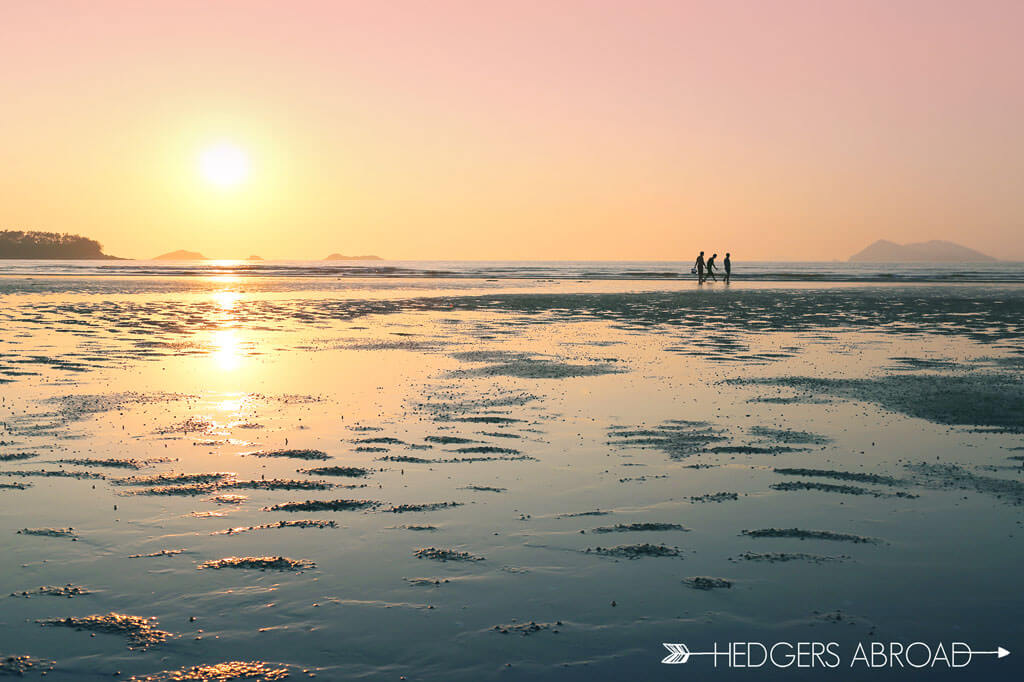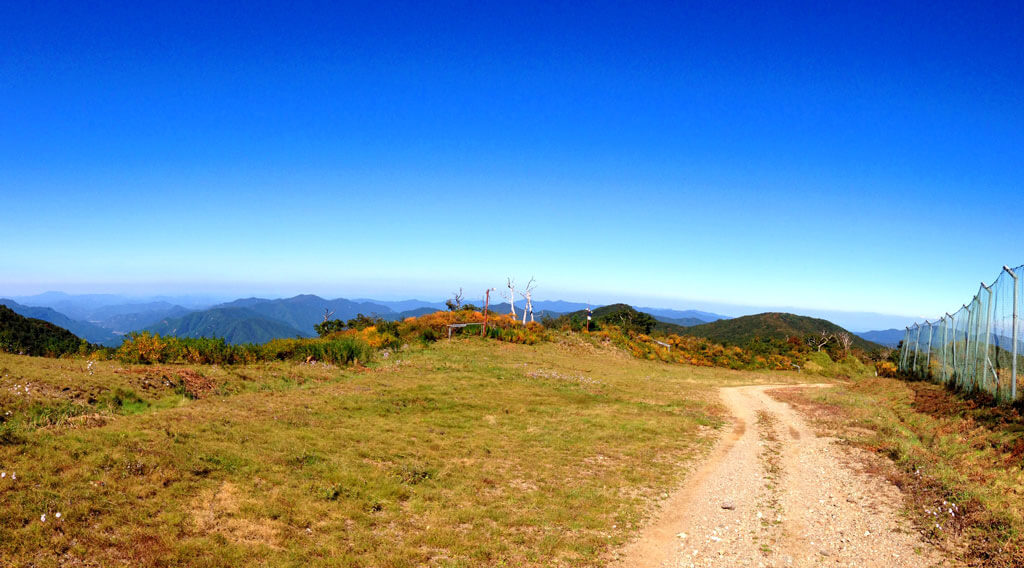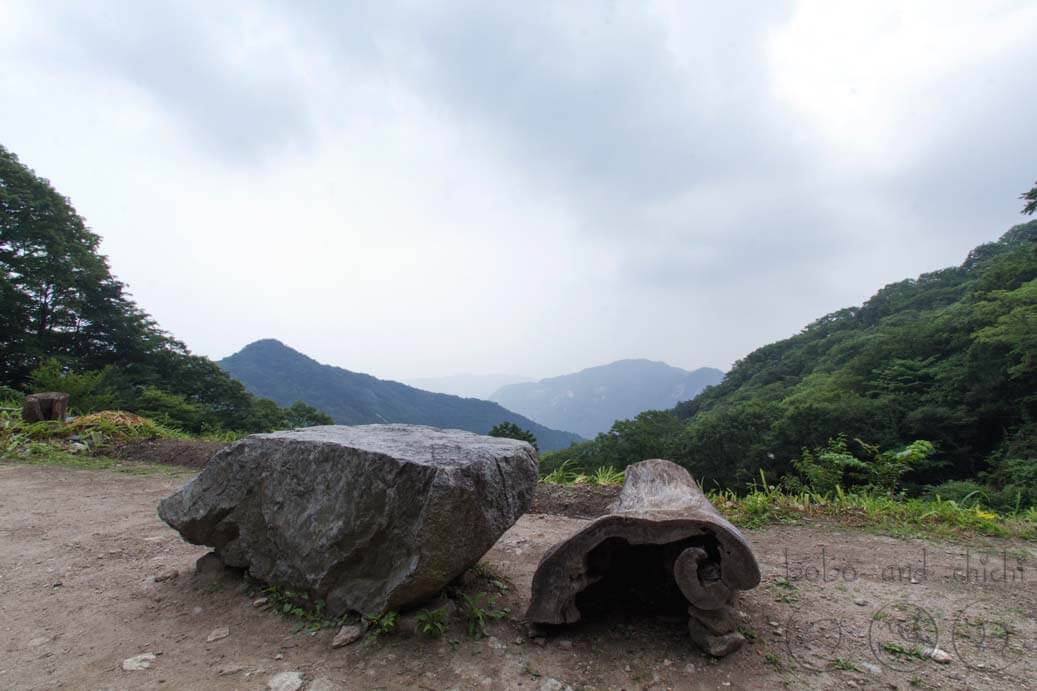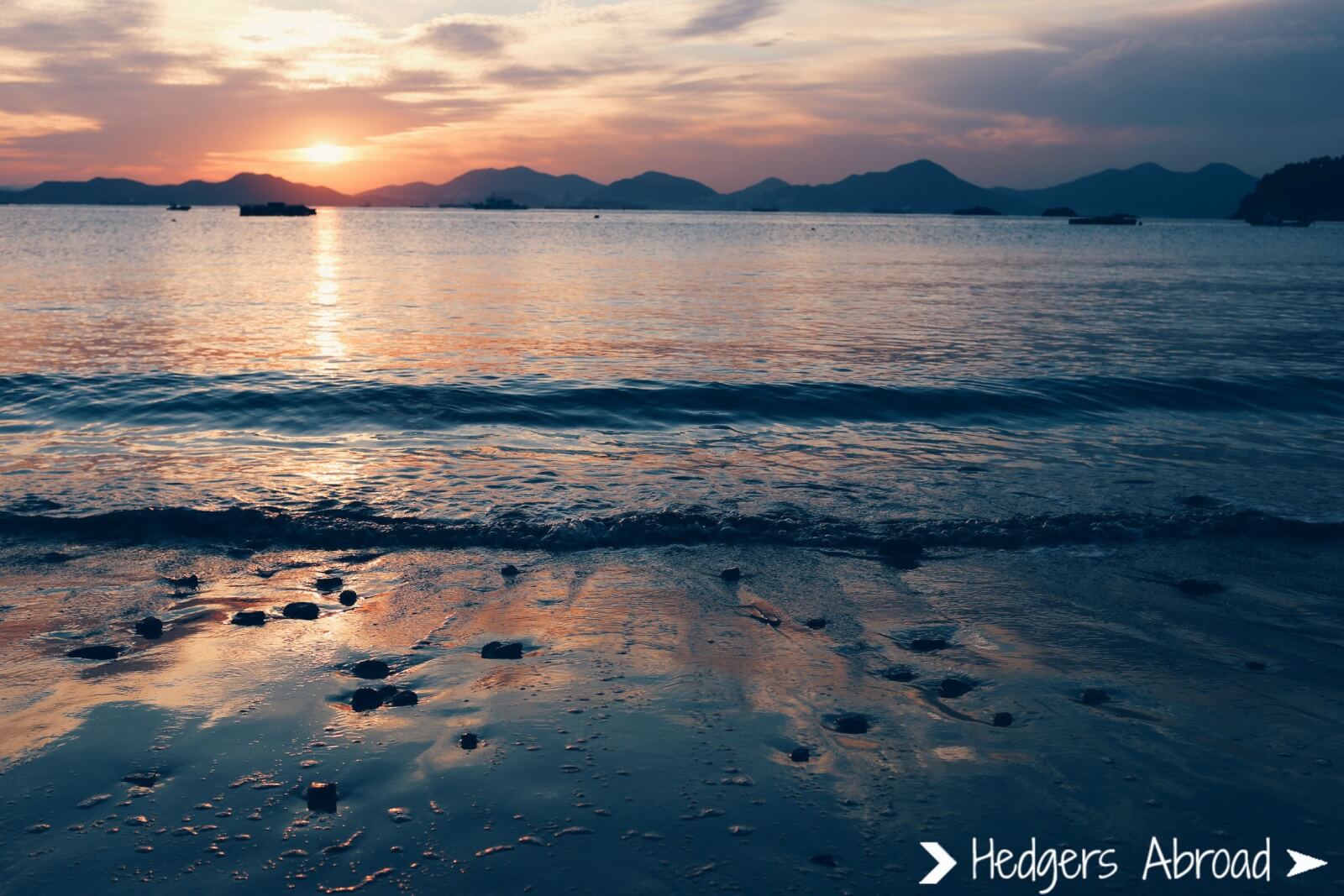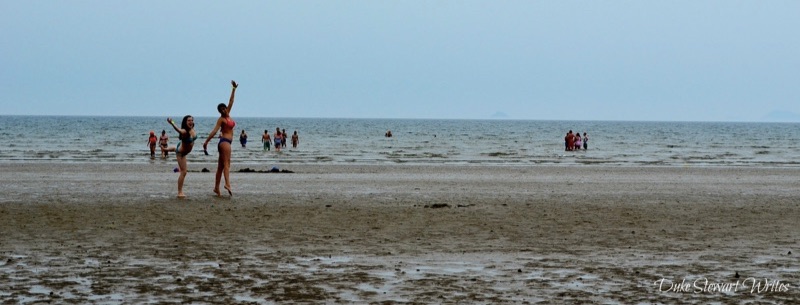South Korea’s 21 National Parks
If your a nature and hiking enthusiast then Korea’s the place for you! Did you know South Korea has 21 National Parks?! We sure didn’t when we first touched down in Korea three years ago. To be honest, this ended up being one of our favorite features about living in South Korea, all the gorgeous mountains and hiking! Regretfully we didn’t make it to every single park, so we reached out to some fellow expat bloggers living in Korea who have for this detailed breakdown of what each of these glorious parks have to offer.
Korea’s 21 national parks consist of 16 mountainous parks, 4 marine and coastal parks, and also 1 historical national park. Check out the map below for their locations!
 Bukhansan
Bukhansan
Located in Seoul, Bukhansan National Park is one of the most visited national parks in the world. Surrounding the the city and easy to access, Bukhansan offers many different hikes including some that include the city’s fortress wall and fortress gates. The distinctive granite peaks make a wonderful backdrop when visiting Seoul. We love how convenient Bukhansan is to access in Seoul, there are many different entrance points, the three main ones being right off the subway lines at Gupabal Station (line 3), Gireum Station (line 4), and Mangwolsa Station (line 1). Our favorite hikes include the largest peak, Baegundae Peak, and the easy Golden Buddha hike. Bukhansan is definitely worth a visit while you’re in Seoul!
Byeonsan-bando
For a perfect mixture of forests, mountains, cliffs, and beaches; look no further than Chungchangnamdo’s Byeonsanbando National Park. Equally famous for its picturesque coastline as well as for its spectacular hiking, this park is a shining example of what a park should be. With something for any type of visitor, Byeonsanbando is truly a “do-everything park” that we can’t help but return to each and every year. We’ve found Gosapo Beach to be one of our favorites in Korea and we’ve heard that rock climbing on the beach’s cliffs is a lot of fun. Hiking Byeonsanbando’s mountains is a special experience. Since this National Park is out of the way for most travelers, it is far less trafficked than the majority of the larger parks and this translates into much more intimate connections with nature on the trail, the summit, and at any of the beautiful Buddhist temples you’ll find scattered across the map. We truly love this park and can’t keep ourselves away during hiking/camping season.
To read more about Byeonsanbando, check out Hedger’s Abroad blog! Follow their travels and journey through their YouTube channel, Facbeook, Instagram, and Pinterest accounts!
Chiaksan

The next closest National Park outside of Seoul located in the Gangwon Province, Chiaksan is best known for it’s rocky valleys and long ridgelines. The hikes offered at Chiaksan are not for beginner climbers and tend to be full day treks. Chiaksan offers a few waterfalls and beautiful temples, even one resting 50 m above a valley.
Dadohaehaesang

While possibly bias, Dadohaehaesang is our favorite of the Marine National Parks. Starting around Mokpo on the West coast and continuing until Yeosu, Dadohaehaesang Marine National Park is a network of protected islands along Korea’s southwestern coast. Hosting a myriad of sea life and ecological safe havens, this park stands to protect and maintain the habitats that once thrived off of the coast. Flora and fauna aside, this park is visually stunning as well. By visiting the islands by ferry or bridge, visitors will be surrounded by the slow and natural lifestyle that is all but gone in modern South Korea. Islands like Geumodo have ample hiking opportunities, but the majority of visitors to Dadohaehaesang M.N.P. come for the beaches. Jindo, Wando, Ando, Bigeumdo are all famous for their numerous beaches and at any of these locations, looking out across the water at the other islands of this park, you’re sure to understand why it is being protected.
To read more about Dadohaehaesang, check out both of these posts from Hedger’s Abroad on Geumodo Island and the best beaches in Jeollanamdo.
Deogyusan

Deogyusan National Park is considered the backbone of Korea’s mountains spanning across 4 counties and is surrounded by five more of Korea’s national parks including Gayasan, Naejangsan, Jirisan, Gyeryongsan, and Songnisan! Deogyusan offers plenty of gorgeous views and flowers. So much in fact that Deogyusan has been called, “The Heaven of the Wild Flowers” by locals. Deogyusan also offers one of Korea’s famous and most beautiful ski resorts, Muju which happens to be our favorite! To check more information on hiking and visiting Deogyusan National Park, check out this post by Klimbing Korean Mountains!
Gayasan

Located close to Daegu, Gayasan National park is another gorgeous park and known for having easy hikes that anyone can enjoy including Gayabong Peak, plus more challenging hikes like the two highest peaks Sangwangbong and Chulbulbong. Gayasan’s mountains are beautiful to see all year long, but the most visually stunning time to visit is in the spring when azaleas, royal azaleas, and and many different wildflowers are in full bloom. Gayasan is also home to one of Korea’s famous temples, Haeinsa Buddhist Temple, known for being one of the main temples of the Jogye order. To see more information on Gayasan National Park, check out Klimbing Korean Mountains blog!
Gyeongju

With Korea’s long and complicated history, it’s no wonder that there are several cultural centers scattered around the country. As the ancient Silla Kingdom was based out of Gyeongju, it is one of the oldest and most famous cities of South Korea. Well-known for its architecture and historical burial sites as well as Gyeongju National Park, this old capital city is loved for many reasons. The park is spread over several locations in town, ranging from beautiful parks to burial mounds; forested mountains to Lotus flower-covered ponds. Inside any of the locations you’ll be surrounded by rural and cultural beauty, as Korea is perfectly displayed by one of the oldest cities you could visit. Covered in historical, natural, and modern beauty, Gyeongju National Park is a step back in time.
Gyeryongsan
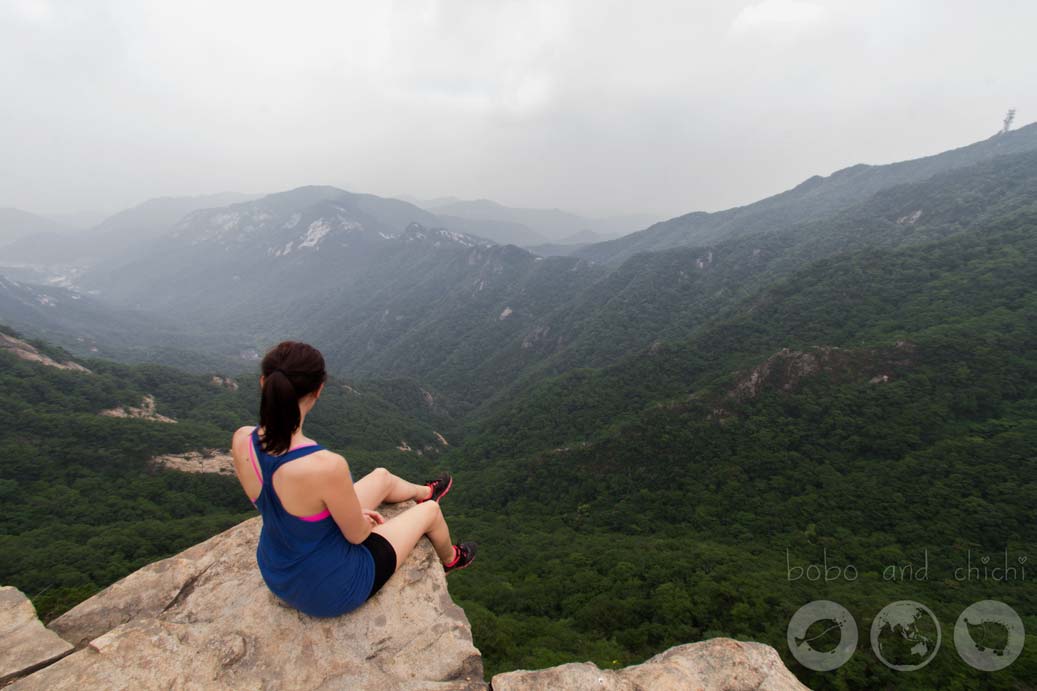
Hallasan

Hallasan National Park on Jeju Island centers around the massive shield volcano – and the highest peak in South Korea – Halla Mountain. Smack dab in the middle of Jeju, the volcano towers over the island, and is visible from almost every place. There are various trails that wind through the park along the gentle slope of the mountain, but just two that go all the way to the summit and the 400 meter wide crater at the top.
I have only visited in the winter, but it was one of my most memorable hikes in all of Korea. It’s a long, gradual climb to the top, but not a particularly hard one. Even with snow covering the ground, the trails are accessible and well maintained. Breaking through the layer of clouds at the top to see the stairway leading to the massive crater (and the end of your upward climb) is an incredible sight.
You can read and see more photos from Hallasan National Park by visiting Katie’s blog at Around the World in KT Days!
Don’t forget to check out her Facebook page for her latest travel updates!
Hallyeohaesang
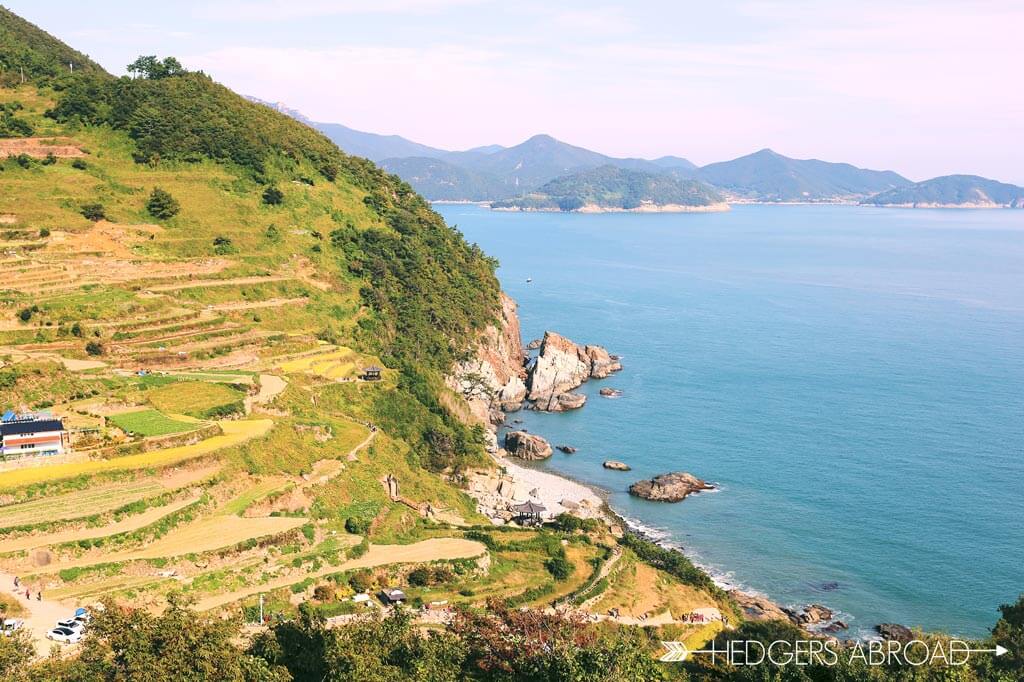
Similar to the aforementioned Dadohaehaesang, Hallyeohaesang Marine National Park is located along the southern coast of South Korea. Stretching from Namhae Island to Geoje, this National Park contains many beautiful coastal areas between Yeosu and Busan. Like many of the other marine parks, Hallyeohaesang is important for protecting special ecological systems and preserving them for future generations. For the visitor, however, this park is a veritable playground of nature, islands, swimming, and hiking. Probably the most notable area of this stunning park is found in the islands off of Tongyeong. With dozens of islands and beaches, Bijindo stands out as the most popular with a beach connecting two adjacent islands with a double sided beach experience. People come from all over Korea to see this park’s beaches, and it’s not hard to see why.
Jirisan

One of Korea’s three most important mountains (along with Geumgangsan and Hallasan), Jirisan is known for its sheer size and wide variety of nature. Covering both Jeolla provinces as well as Gyeongnam province, it’s the largest mountainous national park, and no hiking trail within it will be the same. If you can, aim to visit in mid-Autumn when all the leaves have fully changed, and you’re walking under bursts of yellow, red, and orange leaves. I personally loved the Baemsagol Valley Course, though it was definitely more difficult than I anticipated. Along the way you’ll see some beautiful ponds and streams, and at the top you’ll get gorgeous, unobstructed views for miles.
You can see more of Samantha’s trip to Jirisan on her blog, There She Goes Again. Also check out her Facebook, Instagram, Pinterest, and Twitter accounts to follow her along her journey!
Juwangsan

Situated between the lovely city of Andong and the industrial Pohang, Northern Gyeongsang Province contains the smallest of Korea’s National Parks. Juwangsan National Park, although diminutive compared to the larger parks is not without merit and attraction. With rolling wooden walking paths through much of the park, Juwangsan is the most leisurely and relaxed of the National Parks we’ve experienced. The landscape off this park is a mixture of forest trails and walking paths through dramatic canyons carved by rivers for more years than people have inhabited the nearby towns. Waterfalls and big canyon pools made this remarkably well preserved park a pleasure to stumble upon one day on an injured knee. The gently rolling footpaths, numerous temples, and ample amounts of natural beauty surrounding us on all sides made Juwangsan a park that stands out among the rest.
Mudeungsan
Located in Gwangju, Korea’s 6th largest city in Jeollanamdo Province, Mudeungsan National Park is actually quite new to the Korea National Park’s list. As of 2012, Mudeungsan went from being a provincial park to a national park making it Korea’s 21st national park! Pretty impressive! The most noteworthy trek would be the hikes to Seoseokdae and Ipseokdae’s hexagonal rock formations. These unique formations are dated back to 70 million years ago which makes this hike stand out above others not only in Mudeungsan, but in Korea! If you’re not feeling like hiking, no worries! You can ride up a scenic cable car from Hotel Mudeung Park to a gorgeous peak that even has a small restaurant perfect for a pajeon and makgeolli lunch.
Naejangsan

Naejangsan National Park is known throughout Korea as one of the best places to see the autumn foliage. As with all national parks, it’s huge! Even after living in Korea for over 3 years I only just found out that there are in fact two separate temples which are on different sides of the park, each falling in a different province. Naejangsan Temple is in Jeollobokdo and then Baekyangsa Temple is actually in Jeollonamdo and closer to Gwangju. Both temples are beautiful and peaceful places to wonder around and explore.
You can see more of Roxy’s beautiful photos from Naejangsan with directions on her blog, City Girl Searching.
Also, be sure to check out her Facebook and Instagram accounts for her latest updates and photos!
Odaesan

Odaesan is another National Park located in the Gangwon Province of Korea and is home to the largest wooded area in the country! Although Odaesan seems to be overlooked by it’s big sister, Seoraksan next door, Odaesan is a place of interest in it’s own filled with tons of wildlife including wild boars, turtle doves, and colorful woodpeckers! That may not sound impressive, but Korea’s wildlife is lacking a bit. We have hiked quite a bit in Korea visiting several parks and have only seen ferral cats and about 5 squirrels. If you visit in the spring you will be rewarded with the royal azalea flowers! If you want to find out more information on the different trails and hikes check out Klimbing Korean Mountains blog!
Seoraksan
 Arguably one of the most beautiful places in Korea, Seoraksan National Park is famous for it’s beautiful, karst mountain range. Situated in the North East province of Gangwon, Seoraksan has plenty to offer from day hikes to caves, waterfalls, hot springs, and a cable car ride, to more challenging over night hikes like the infamous Dinosaur Ridge Trek. We love the location of Seoraksan the most. Situated right next to the coastal city of Sokcho, and other beautiful beach towns such as Naksan and Hajodae make visiting Seoraksan even more worth your while.
Arguably one of the most beautiful places in Korea, Seoraksan National Park is famous for it’s beautiful, karst mountain range. Situated in the North East province of Gangwon, Seoraksan has plenty to offer from day hikes to caves, waterfalls, hot springs, and a cable car ride, to more challenging over night hikes like the infamous Dinosaur Ridge Trek. We love the location of Seoraksan the most. Situated right next to the coastal city of Sokcho, and other beautiful beach towns such as Naksan and Hajodae make visiting Seoraksan even more worth your while.
Sobaeksan

Rumor has it that this national park is known in Korea for having the best winter scenery. Sobaeksan is also known for it’s beauty in the spring offering countless royal azaleas and wild flowers to fill the gorgeous landscape with tons of color. Located in central Korea, Sobaeksan has tons of hikes to choose from. To learn more about Sobaeksan National Park check out Klimbing Korean Mountain’s page.
Songnisan


Taeanhaean
Wolchulsan
You can read and see more photos from Wolchulsan National Park by visiting Duke Stewart’s blog.
Woraksan

Located in the Chungcheongbuk Province and famous for it’s beautiful valleys and waterfalls, Workasan National Park should be high on your list of parks to visit in Korea! Not only can you enjoy the waterfalls, but there are also stunning views of Chungju Lake which makes this park a little more unique from the others! Relaxing in the famous Suanbo hot springs after one of Woraksan’s challenging hikes up steep slopes is the perfect way to unwind post hike. Woraksan is perfectly situated between Songnisan and Sobaeksan National Parks making it easily to visit all three on a long weekend!

Did any of Korea’s national parks stand out to you? Do you have a favorite national park? Share in the comments below, we’d love to hear all about it!
Be sure to check out all the amazing bloggers who contributed to this post in their links above!
If you liked this post please share it on Pinterest below! Afterall, sharing is caring! Happy hiking everyone!

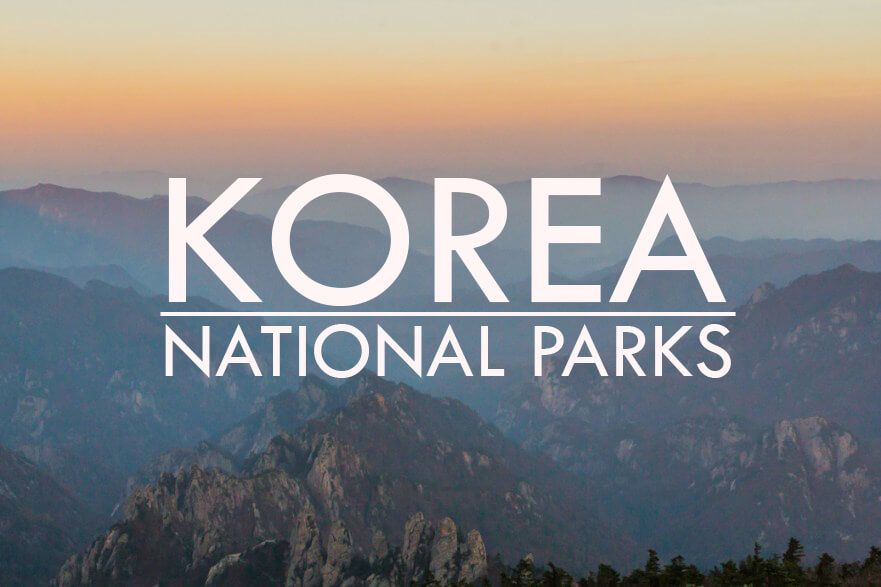
 Bukhansan
Bukhansan


